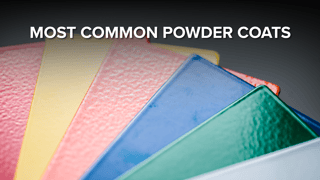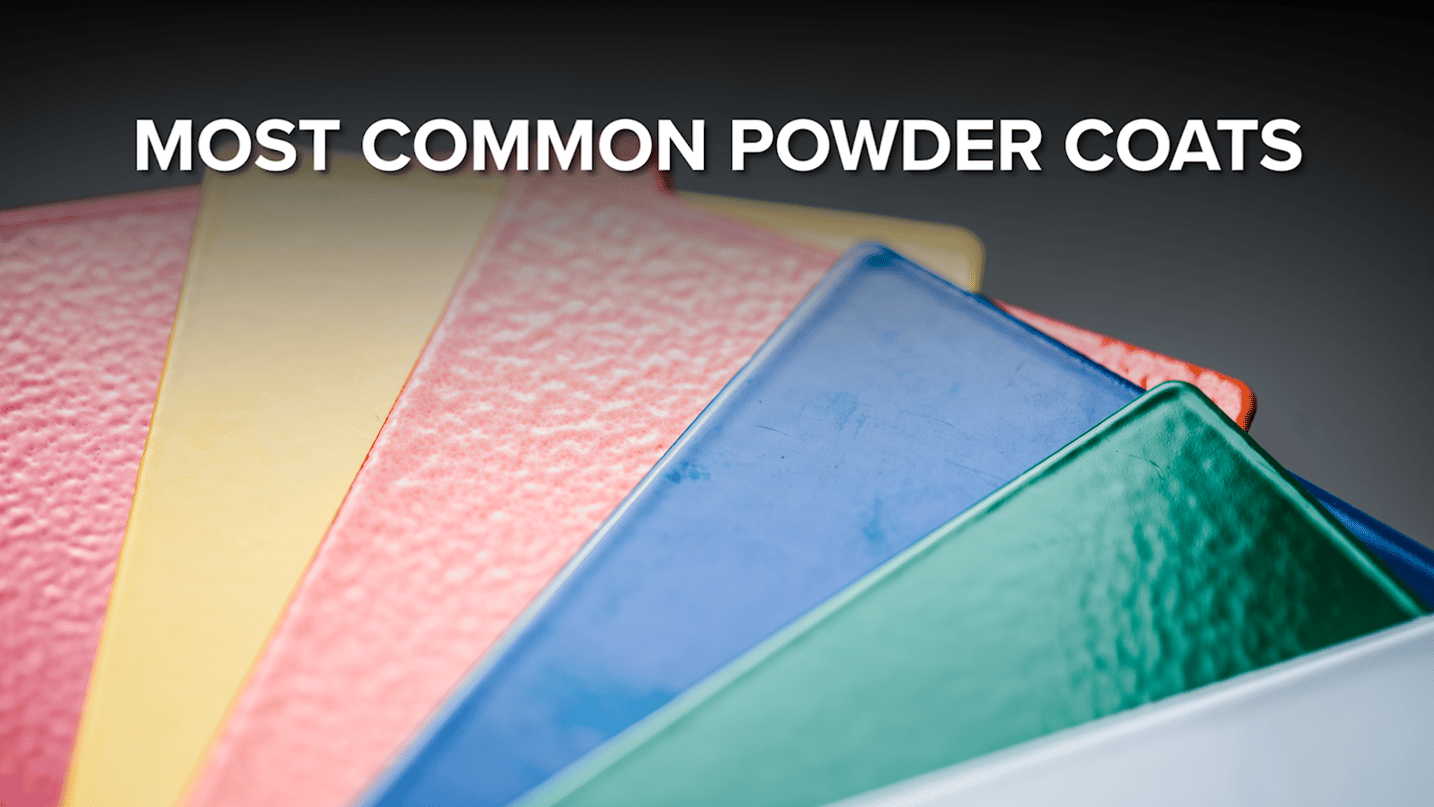
Thermoplastics and Thermosets
All forms of powder coating powders fall under two major categories: thermoplastic and thermoset. Thermoplastics are commonly used for their chemical resistance and general durability and are typically applied by fluidized beds. Thermoplastic powder coatings will melt when exposed to high temperatures. This prevents any chemical bonds from forming and allows for the powder coating to be reused.
When applying a thermoplastic powder coating, the surface that is about to receive the coating will be heated to a temperature that is much higher than the powder’s melting point. This is part of what makes them extremely adhesive to metal. When a thermoplastic powder hits a heated surface, it fusion bonds to the surface and then creates a film covering the substrate. They are also known to for their thickness and tend to be more durable than most thermoset powder coatings.
Thermosets are different in that they form chemical bonds during the curing process. These powder coats have resins that hold a lower molecular weight than thermoplastics. This means that during the curing process, when the coating is exposed to high temperatures it will melt into a thin, uniform film and begin to cross with each other or with other reactive components within the powder coating. As a result of this cross-link they form a product that holds a much higher molecular weight and become far less sensitive to heat.
Thermoset coats will offer better protection and long term performance when dealing with metal equipment like electronics or general home applications because they are built to withstand higher temperatures and more direct heat than thermoplastics. Thermoplastic powder coatings and their added flexibility are better suited for surfaces that may be subject to frequent contact such as railings, fences, or playground equipment.
Any materials coated using powder coating will be more resistant to any and all forms of contact when compared to traditional coating methods.
Thermoplastic Resins
Within these two major types of powder coating lie more specific forms of powder coatings based on the resin that is used. Each the resins have different properties that make the powders they are mixed with more suitable for specific applications and environments. If you need a flexible powder coating that provides added resistance to corrosion, then it would be better to select an epoxy based powder coating over a polyester based powder coating.
Nylon
Nylon is one of the most common bases used in thermoplastic powder. More commonly referred to as polyamides, these nylon-based thermoplastics are incredibly durable and provide additional chemical and solvent protection. Polyamide coatings are seen frequently on dishwasher baskets, pipes, valves, and outdoor applications because of its added strength and clean appearance.
Polyester
Thermoplastic polyester powders will not typically require a primer to aid in the adhesion process. Polyester powder coatings can lack some of the impact resistance that other powder coatings may offer, but is still more resistant than traditional liquid paints and coatings. One of polyester powders best properties is its strong resistance to UV. This prevents the powder coating from yellowing or chalking over time.
Polyester powders that are mixed with TGIC (triglycidyl isocyanurate) in the curing process gain additional impact and weather resistance. TGIC polyester makes a great choice for any outdoor items that would need added protection from light, such as patio furniture or panels on large industrial buildings. Polyesters are a versatile form of resin and will commonly be found mixed with others to create a hybrid powder coat.
Epoxy-Polyester Hybrid
Epoxy polyester is a hybrid between two of the most popular powder coating hybrids available. It is more resistant to chalking and over-baking than pure epoxies and coat surfaces to a greater degree. This makes the hybrid a good choice for decorative applications. This powder coating is slightly less resistant to chemicals and solvents and displays a lower surface hardness. This hybrid is usually used for residential applications such as shelving and office furniture.
Thermoset resins
Polyurethane
Not many resins are as versatile as polyester. Polyester can be applied as a thermoplastic or as a thermoset. Polyurethane is a hybrid powder coating of polyester and urethane coatings. Polyurethane has a thin film appearance that is durable and offers strong mechanical and chemical resistance. Polyurethane powder must be applied at a higher heat in the curing process which means parts that contain lead, cast, and sometimes aluminum are unable to be coated.
Epoxy
Thermosets that contain epoxy offer some of the best corrosion and impact resistance of any powder coating finish. You will see epoxy finishes commonly used in the automotive industry and when covering electrical components. Epoxy has an electrical insulation property and can be used as an adhesive, sealant, coating or more with electrical applications. Epoxy coatings are sensitive to light and high heat areas so they should not be used for outdoor applications. This is why you will commonly see epoxy coatings underneath the hoods of cars and in other areas of the vehicle that require a tough and resistant coating without risking exposure or contact with light.
Acrylic
Acrylic powder coating is popular in the automotive industry as well. Commonly used for clear coatings, acrylic powder will cure into a smooth surface that exhibits great impact resistance. When you mix acrylic with a resin such as urethane it can become quite versatile. Acrylic urethane finishes have a great appearance with brilliant color and gloss. The finish has great durability and resistance to chemicals and weathering. This powder coating hybrid has some limiting properties however, notably that it must be rather thin as it can begin to pull back on itself as the thickness increases.
To read more about all things powder coating, check out our blog.
